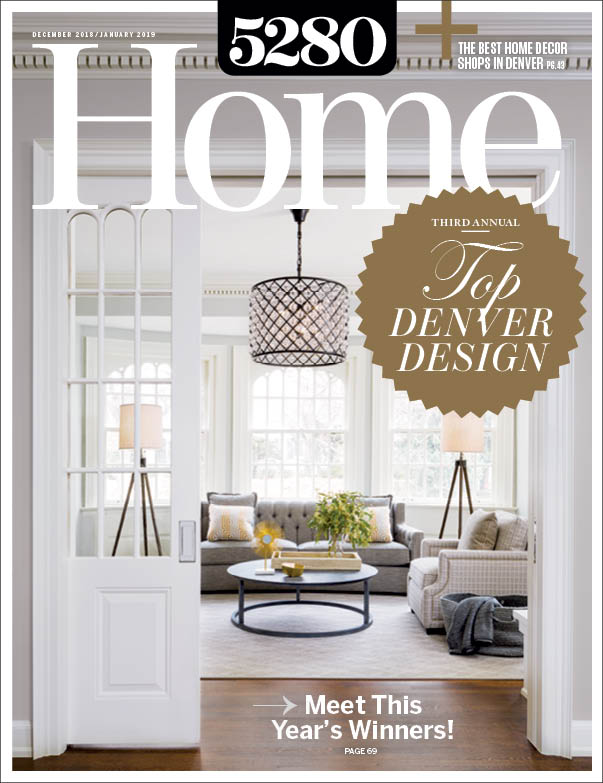The Local newsletter is your free, daily guide to life in Colorado. For locals, by locals.
The grande dame of Cheesman Park was looking—at 106 years old—more than tired. Built in 1912 in the Italian Renaissance style, she’d housed only three families over a century, during which time careless renovations had rendered her a strange conglomeration of disparate design epochs—right up to her third level, last updated in 1972 and every bit the Brady Bunch set sprung to life.

Her new owners asked themselves the inevitable question—one that aging Tinseltown sirens have pondered silently for decades: How do you give an icon a major facelift while preserving her unique character, so she still looks like herself? The answer was to call in the professionals: design-build firm Factor Design Build and interior designer Beth Armijo.

Their task? To update the 8,000-square-foot home and bring back some of its original charm. “The homeowners wanted to make things a little more accessible for a modern family—not quite as formal,” says Jane Blumer, architect at Factor Design Build. To do that, the team tore most of the home down to the studs before reimagining the floor plan; re-creating (and sometimes adding entirely new) staircases and windows; swapping out the old floors on the second and third levels for quarter-sawn white oak planks; replacing plumbing and electrical systems and fixtures; and supplementing the steam boiler with modern heating and cooling systems.

To that newly functional structure, the design trio added “historical finishes in a more modern style,” says Josh Fiester, co-founder and CEO of Factor Design Build. Throughout the five-bedroom, seven-bathroom home, they re-created period moldings; designed pocket doors to match window silhouettes; installed Italian marble tile; and generally sweated all the small stuff: “We restored the dining room chandelier, got its 10,000 crystals cleaned, and hung it in the stairway,” Fiester says. Even the new radiator covers—custom-made from painted poplar wood—are period-accurate. According to Armijo, maintaining uniformity among old and new woodwork was key to this design’s success. “It’s amazing how they kept it so true to the house—the detail is impeccable,” she says.

Armijo created a livable vibe by combining many of the homeowners’ existing furnishings with timeless custom designs. “The house had enough of a period look, so the furniture is much cleaner,” says the designer, who also selected the lighting fixtures, paint, and tile. But nods to the home’s roots still make appearances, from the master bathroom’s fresh take on the classic, 19th-century clawfoot tub to lights that reinterpret period styles—“like the Ball-jar-inspired lanterns in the kitchen,” Armijo says.

A neutral palette of family-friendly materials—including hard-wearing wool—unifies the rooms. “For a historical house it was pretty open, and we renovated it to be even more so. It didn’t have too many choppy rooms, so the palette flows through the spaces,” Armijo says. A few carefully chosen patterns—from the stair runner’s medallions to the kitchen banquette’s striped pillows—prevent the look from becoming staid. Armijo’s secret to pattern success: Approach a room as you would an outfit. “It’s like when you put your pinstripe suit together,” she says. “You might wear a solid shirt with a paisley tie and mix up the scale.”
Now, from the outside, the home built the year the Titanic sank still looks very much the same. But inside, she’s been reborn—proof positive that age is nothing but a number.

Design Pros
Interior design by Beth Armijo, Armijo Design Group
Architecture by Jane Blumer, Factor Design Build
Art consulting by Ann Benson Reidy & Associates
Cabinets by Michael Brotherton Woodwork & Design









